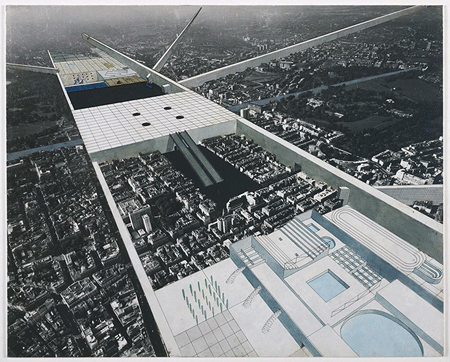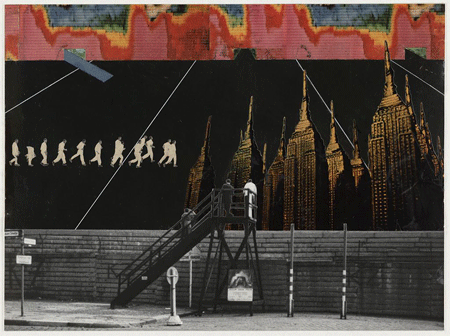
We’ve gathered six examples that illustrate how the images in Artstor can be used to enhance the teaching and learning of architecture and architectural history, along with two case studies, one by a then-doctoral candidate and another by a fine art faculty member.
In his four decades as an architect and urbanist, Rem Koolhaas has never wavered in his audacious vision, continuously dreaming up controversial projects such as the Central China Television Headquarters Building in Beijing (composed of two uneven 44-story legs joined at the top by a 13-story angled bridge that precariously juts out over a plaza), or an unrealized proposal for a 1.5-billion-square-foot Waterfront City on an artificial island just off the Persian Gulf in the coast of Dubai.
Koolhaas’ iconoclasm was evident from the beginning. His final project at the Architectural Association School of Architecture in London was a Ballardian series of 18 drawings, watercolors, and collages called “Exodus, or the Voluntary Prisoners of Architecture,” which, according to the Smithsonian Magazine, galleries and museums ask to borrow more often than anything else in MoMA’s architecture and design collections. In this project, Koolhaas and his collaborators lampooned the modernist utopias of their predecessors, sarcastically describing the Berlin Wall as a masterpiece of design and proposing a walled city within London as a way to create a new urban culture, one which would lead inhabitants to leave the rest of the city to fall to ruins:
Suddenly, a strip of intense metropolitan desirability runs through the center of London. This strip is like a runway, a landing strip for the new architecture of collective monuments. Two walls enclose and protect this zone to retain its integrity and to prevent any contamination of its surface by the cancerous organism that threatens to engulf it. Soon, the first inmates beg for admission. Their number rapidly swells into an unstoppable flow. We witness the Exodus of London. The physical structure of the old town will not be able to stand the continuing competition of this new architectural presence. London as we know it will become a pack of ruins.

You can find all of the images in Artstor’s The Museum of Modern Art: Architecture and Design collection in JSTOR by searching for “Exodus, or the Voluntary Prisoners of Architecture,” or search for Koolhaas to see the series along with hundreds of photographs of his built projects from ART on FILE, Magnum Photos, and Larry Qualls. You can also find three 360° spherical views from Columbia University’s QTVR Panoramas of World Architecture collection in the Artstor Digital Library.


